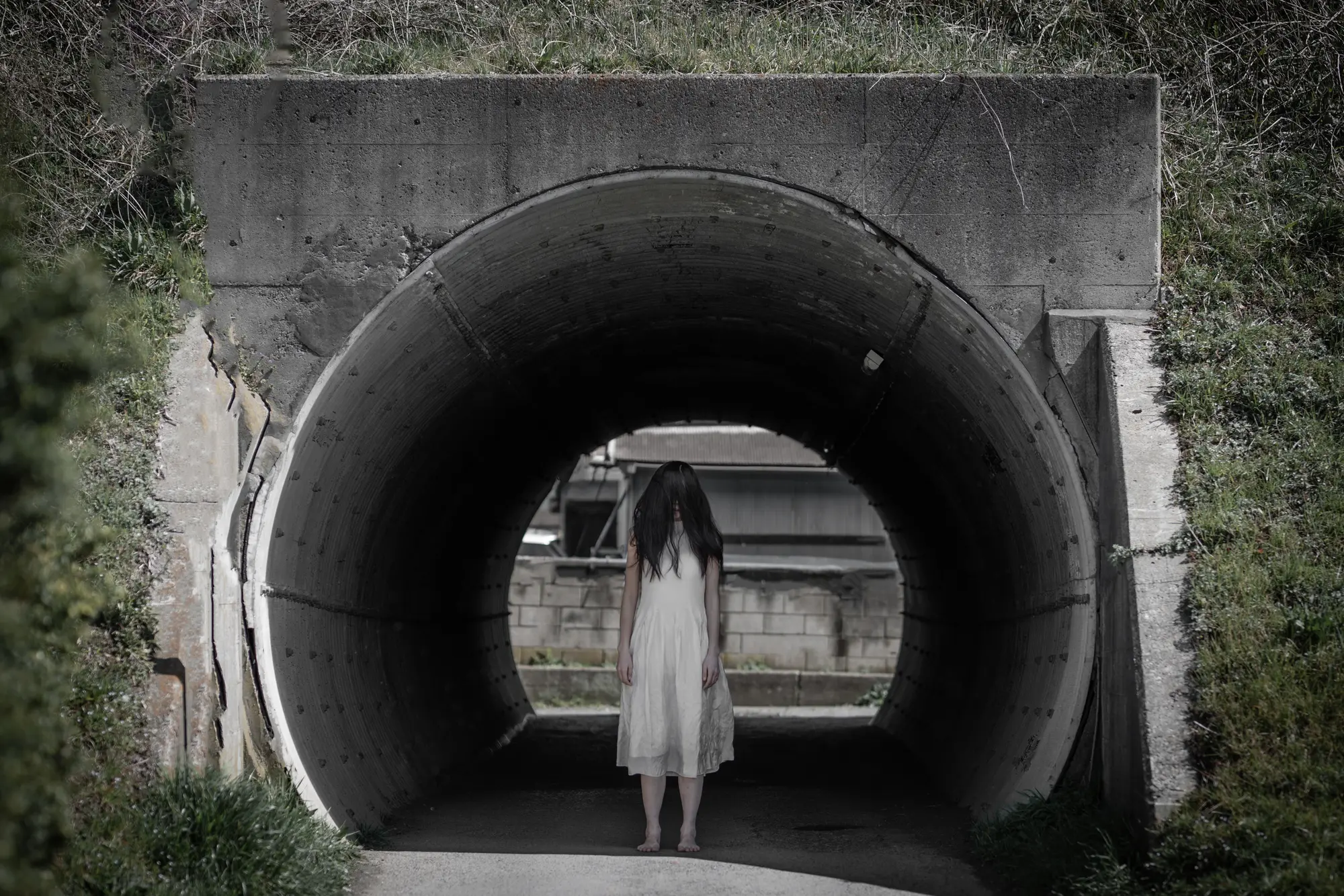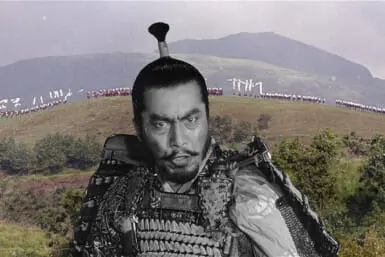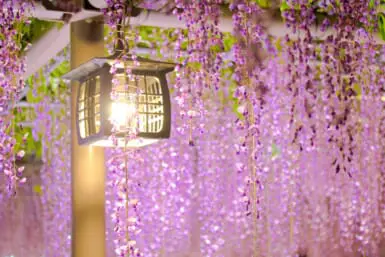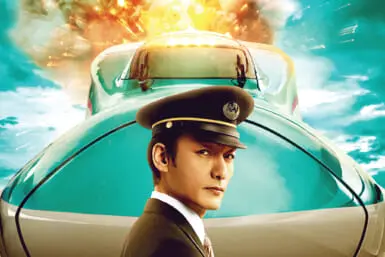The mist curls thickly in the mountainous forests of Fukuoka, hanging dense like an ancient spell over Takashi Shimizu’s fictional Inunaki Village. This haunted settlement, untouched by the laws of Japan and driven by a hunger for the forbidden, breathes with secrets in Howling Village, the first film in the director’s trilogy. A collection of stories blending modern horror with ancient Japanese folklore — Shimizu’s three movies transport us to places where the boundaries between myth and reality blur.
The tales behind these films, however, are far from mere movie plots. Japan’s landscapes are drenched in centuries-old stories of spirits and curses, where each forest, village and shadow has its own story to tell. Through Howling Village, Suicide Forest Village and Ox-Head Village, Shimizu crafts a deeply unsettling cinematic experience that roots horror not in monsters or murder but in places; the very soil of Japan.
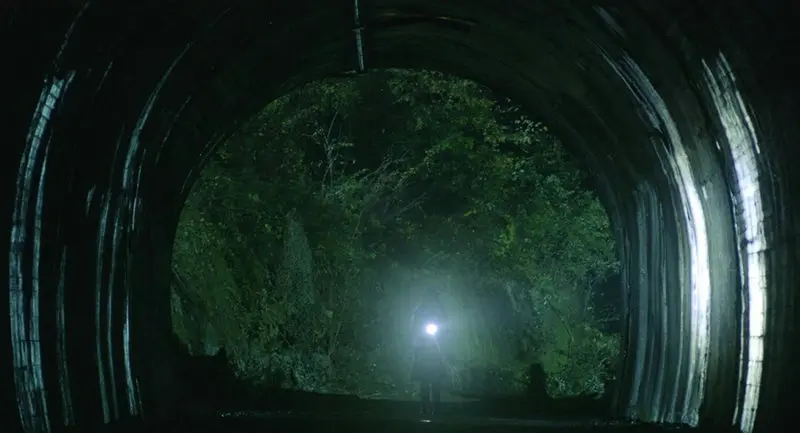
Howling Village: The Haunting Legend of Inunaki
In the world of Japanese horror, few legends are as unnerving as that of Inunaki Village, also known as “Howling Village.” This haunted enclave is said to lie deep within the mountains of Fukuoka Prefecture, hidden by distance and supernatural barriers. Stories of Inunaki began circulating in the 1990s. There were rumors of a small, forgotten village untouched by Japan’s laws — a place where violence is met with silence and outsiders are forever unwelcome.
Locals say that the only way to reach Inunaki Village is through an abandoned tunnel, a relic of Japan’s industrial past. Strewn with graffiti warning travelers to turn back, the tunnel is rumored to have once had a sign reading ominously: “Beyond this point, the Constitution of Japan does not apply.” Those who ignore this warning and proceed encounter a chilling silence that consumes sound and distorts time, cutting off cell signals and plunging intruders into isolation. Some claim desperate cries echo within the tunnel’s walls, while others speak of villagers, rejecting all contact with the outside world, who attack intruders on sight.
Inunaki Village may have been inspired by a real settlement that was once upstream along the Inunaki River, which was submerged during the construction of Inunaki Dam between 1970 and 1994. Residents were relocated, leaving behind ghostly remnants of a former life in the valley. Meanwhile, the old Inunaki Tunnel, abandoned in 1975 when a new road opened, fell into disuse.
By the late 1980s, it had become a site of tragedy and violence, including the brutal murder of a young man by local delinquents. The crime left an indelible mark on the tunnel, fusing reality with the supernatural as stories circulated of a white sedan — allegedly tied to the victim — appearing as a ghostly omen within the tunnel. Over the years, further incidents, including fatal accidents involving young thrill-seekers, fueled the legend of Inunaki as a cursed location, adding to its reputation as one of Japan’s most terrifying haunted spots.
In his first installment of his horror trilogy, Howling Village, Shimizu reimagines this legend with chilling fidelity, capturing the overwhelming sense of isolation and terror that Japan’s abandoned rural spaces evoke. The villagers in his film are trapped in their own nightmarish world, and the protagonist’s journey into Inunaki becomes a descent into a place outside of time and space, where the dead rule.
Shimizu’s vision not only brings this mysterious village to life but also pays homage to Japan’s respect for the invisible boundaries between this world and the next, where some things are better left undisturbed.
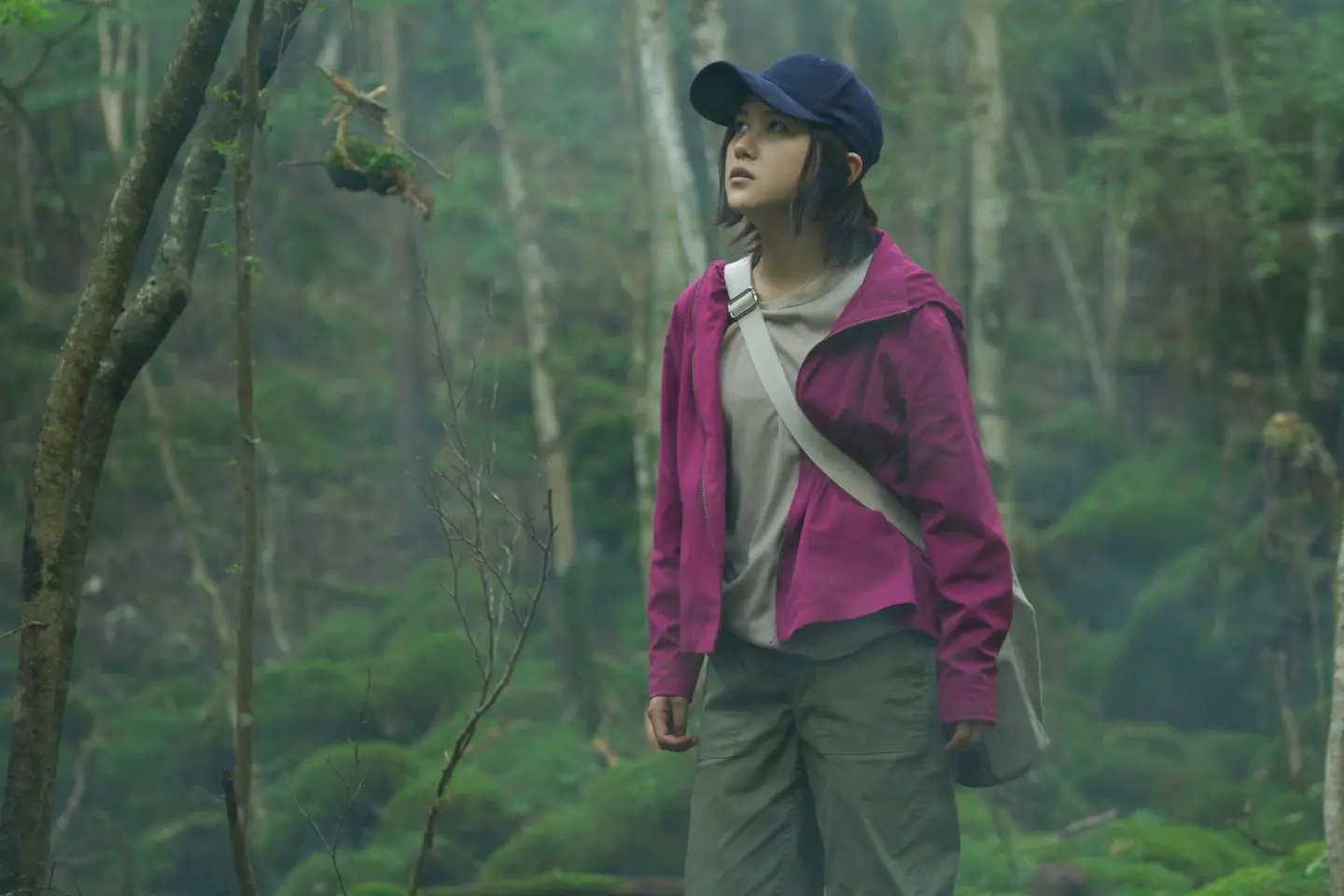
Aokigahara: The Forbidden Forest in Suicide Forest Village
Known as Japan’s “Suicide Forest,” Aokigahara is a place steeped in sorrow and silence, where thick trees and volcanic rock absorb even the faintest of sounds. Nestled at the base of Mount Fuji, the forest is home to myths that reach far beyond its recent association with tragedy.
Aokigahara has long been regarded as a haunted realm, a liminal space where lost souls linger, unable to move on. Local legends suggest that, centuries ago, it was a place where ubasute — the practice of abandoning the elderly — was carried out during times of famine, leaving them to die in the woods. Stories say the spirits of those left behind now haunt the forest, echoing grief and anger.
In Suicide Forest Village, Shimizu dives into Aokigahara’s dark legacy, transforming it from a setting into a character in its own right. As his protagonists traverse the forest’s ghostly terrain, they encounter spirits tied to Japan’s broader themes of grief, duty and isolation. Shimizu weaves into his narrative the concept of yurei, or restless spirits, and their tendency to linger in places of suffering and sorrow.
It is a horror born from Japan’s understanding of mental health, social isolation and the lingering presence of spirits who have suffered greatly in life. For many, Aokigahara is a reflection of human suffering and loneliness, a vast, unmarked cemetery of those who died in despair.
Stepping into Aokigahara today, one finds not only the forest’s infamous “silence” — an absence of birdsong and wind that unnerves even the most steadfast visitors — but also signs of hope left by volunteers: placards urging people to seek help, to call loved ones, to reconsider.
This is Japan’s haunted forest, where people come face-to-face with the fragility of the human mind and spirit. Shimizu’s film pays homage to this complex relationship between land, legend and lingering spirits, offering audiences not just a horror story but a contemplative look at Japan’s societal pressures.
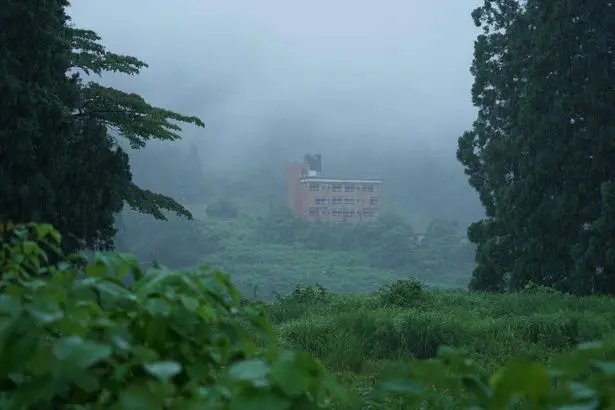
Ox-Head Village and the Cursed Legacy of Tsubono Kosen
The final chapter in Shimizu’s trilogy takes us to Ox-Head Village, based on an even more obscure legend about a rural area rumored to be plagued by an ancient curse. Said to be one of Hokuriku region’s most terrifying ghost spots, the story centers around an abandoned hotel known as Tsubono Kosen.
Once a bustling tourist destination in the 1970s, it offered bathhouses, pools and restaurants, but abruptly shut down in 1982, shortly before Japan’s economic bubble. While the surrounding facilities were dismantled over time, the hotel itself stood untouched, becoming a hot spot for thrill-seekers, local bikers and paranormal enthusiasts.
The location’s haunting reputation was fueled by dark events: a young boy’s drowning in the hotel pool in 1980 is said to have led to its closure, while local legend claims the hotel’s missing owner was later found hanged in the boiler room.
Locals caution against visiting Tsubono Kosen, with superstitious “rules” for anyone attempting to leave unharmed: don’t arrive in a white car, never open any closed doors, and don’t wander off alone. Folklore holds that water sources often draw spirits, and a local psychic famous in the 1980s, Aiko Gibo, reportedly refused to enter, sensing overwhelming malevolence.
Ox-Head Village also introduces another famous Hokuriku site: the Miyajima Tunnel, or “Ox-Head Tunnel,” located 55 kilometers west of Tsubono Kosen. This narrow, 55-meter tunnel on the Toyama-Ishikawa border is named after the nearby Ushikubi (Ox-Head) district, known for its supernatural legends and once home to a now-lost village also named “Ox-Head Village.”
The tunnel, built in 1928, became infamous after a man’s self-immolation and his mother’s subsequent suicide near the site. Ghost sightings abound, with visitors claiming to see an elderly woman in mourning clothes drifting through the tunnel at night. Deepening its eerie reputation, a Jizo statue stands within, said to have once wept blood and now left headless — a ghostly monument to the location’s haunted past.
In Ox-Head Village, Shimizu taps into these unsettling local myths, bringing out their layered cultural symbolism and cautionary themes. His characters confront not just a place but an embodiment of ancestral anger and lingering supernatural forces. The third movie, like Howling Village and Suicide Forest, goes beyond horror. Shimizu uses the layered fears of karmic retribution and unbroken taboos, reminding us that Japan’s spooky rural sites are haunted not only by spirits but by the invisible boundaries that mark the limits of the human world, where stepping out of line can have lasting, terrifying consequences.
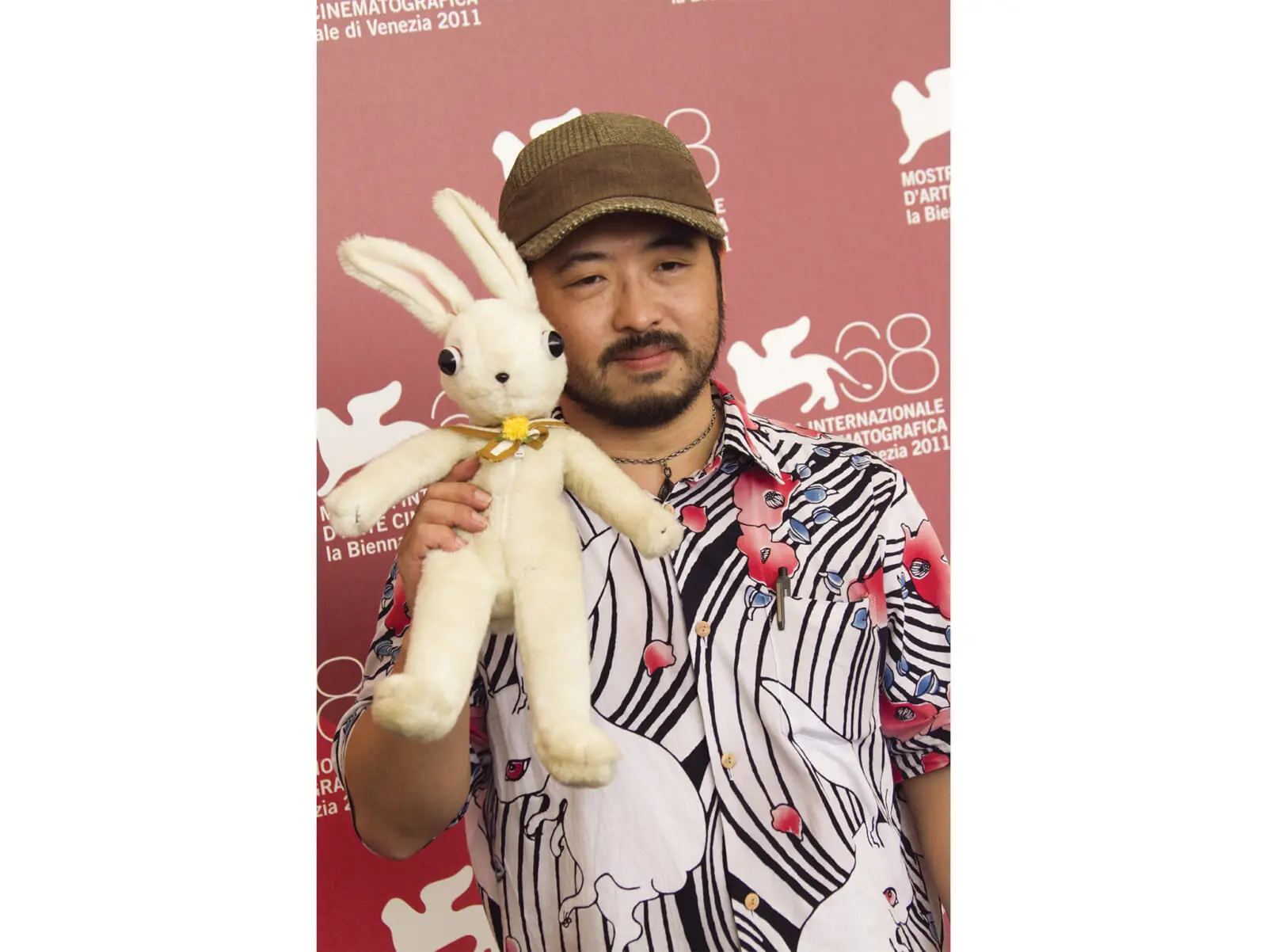
Takashi Shimizu: The Modern Keeper of Japan’s Horror Tradition
Shimizu’s trilogy is remarkable not only for its supernatural elements but for its grounding in the unique history and culture of Japan. Unlike many horror films that rely on shock or jump scares, Shimizu’s work relies on atmosphere, folklore and an undercurrent of respect for the spirit world.
His portrayal of Japanese horror respects the tradition of kaidan (supernatural stories), meant not just to terrify but to impart caution and respect for the unseen forces that shape our world. This trilogy is Shimizu’s way of keeping Japan’s folklore alive, while also bringing ancient fears into the modern consciousness without diminishing their mystique.
What makes these urban legends so compelling is that they are deeply interwoven with both cultural memory and societal issues. These stories aren’t simply ghost tales; they’re reflections of Japan’s social fabric, of the pressures and unspoken fears that lie beneath. Inunaki’s lawless land echoes fears of isolation and societal breakdown. Aokigahara mirrors Japan’s struggles with mental health and isolation. And the cursed villages remind us of the dire consequences of breaking sacred taboos.
Japan’s horror thrives on atmosphere, silence and the unspoken. Shimizu’s trilogy takes these cultural concerns and recasts them as horror, reminding us that Japan’s past is alive and watching.

